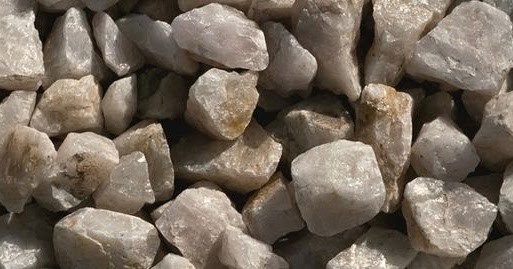Chromium (Cr) is one of the most toxic and carcinogenic inorganic pollutants, especially chromium (VI). Chromium (VI) is produced by industrial activities, such as the leather tanning, photography, electroplating, textiles, and dyes industries. Small amounts of chromium are needed by humans, as a stamina booster medicine for daily activities. But it would be dangerous if the body is exposed excessively to the human body. It can cause a chronic disease lasting for years that affects one of the organs of the body.
Company workers involved in chromium coating process have high-risk to be affected by chromium pollution. The accumulation of steam that is inhaled during the chromium coating process can cause shortness of breath and lead to lung cancer. Furthermore, the skin exposed to chromium continuously will cause ulceration, ulceration of the mucous membranes of the nose, vascular effect (damaged blood vessels in the aorta), anemia and lethargic body, poor body immunity, reproductive disorders, and kidney disorders. Since 1982, dermatitis has become one of the top ten occupational diseases (PAK) based on the potential incidence, severity, and ability to be prevented. Therefore, it is necessary to develop an easy, inexpensive, and effective method to reduce/eliminate chromium from water, for example, through the ion exchange process, separation process with membranes and adsorption.
The adsorption method is the most often used method to remove chromium from water because it is very efficient and economical. Various types of adsorbents have been used to adsorb chromium. Conventional adsorbents such as activated carbon, chitosan, zeolite, and clay mostly used, but the adsorption capacity of the adsorbents are still less selective for heavy metals. Among the four adsorbents, zeolite is a material that has a very regular crystalline form with interconnected cavities in all directions and makes the surface area of zeolite very large, so it is very well used as an adsorbent. Although synthetic zeolite has been widely produced, natural zeolite has an important role because of its abundant availability in nature, especially in Indonesia. One area that has abundant natural zeolite reserves is in Nagapenda Sub-district, Ende Flores Regency, NTT. According to Final Report of macro Mapping for type C Mining Material (NTT Mining and Energy Agency, 1992-1993), there was about 7.150.000 m3 zeolite reserve in the village of Ondorea, Nagapenda Sub-district, Ende Flores Regency, NTT, especially the mordenite type zeolite. But like with other conventional adsorbents, the use of natural zeolite as an adsorbent is not much in demand because it only targets metal selectively and the preparation for needed quantification is difficult. To increase the selectivity and sensitivity of natural zeolite so that it can be used as an adsorbent, natural zeolites need to be activated and modified with other materials.
One of the materials that can be used to improve the adsorption capacity of Cr (VI) is a material made of polymer material known as ionic imprinted polymer (IIP) material. Modification of natural zeolite with IIP is expected to increase the adsorption ability specifically for Cr (VI) with selectivity and sensitivity from various sample matrices. IIP material was chosen to be used in the modification of natural zeolite to function as an adsorbent because IIP has been known as a new adsorbent material.
The zeolite-IIP adsorbent is synthesized by reacting Cr (VI) as a template, 4-vinyl pyridine (4-VP) as a functional monomer, ethylene glycol dimethacrylate (EGDMA) as a cross-linker, ethylene benzoyl peroxide (BPO) as the initiator, natural zeolite has been activated as host and ethanol: acetone (2: 1) as a solvent / porogen. After the synthesis process, Cr (VI) trapped in the polymer system is removed by the addition of HNO 3 solution. So selective zeolite-IIP adsorbent is produced for Cr (VI). The control adsorbent is non zeolite-IIP. Non zeolite-IIP is synthesized in the same way but without Cr (VI).
The zeolite-IIP adsorbent is synthesized by reacting Cr (VI) as a template, 4-vinyl pyridine (4-VP) as a functional monomer, ethylene glycol dimethacrylate (EGDMA) as a cross-linker, ethylene benzoyl peroxide (BPO) as the initiator, natural zeolite has been activated as host and ethanol: acetone (2: 1) as a solvent / porogen. After the synthesis process, Cr (VI) trapped in the polymer system is removed by the addition of HNO 3 solution. So selective zeolite-IIP adsorbent is produced for Cr (VI). The control adsorbent is non zeolite-IIP. Non zeolite-IIP is synthesized in the same way but without Cr (VI).
The results showed that the adsorption of Cr (VI) on the surface of zeolite-IIP adsorbent was influenced by the mass of the adsorbent, pH, contact time, and initial concentration of Cr (VI). The optimum adsorption process occurs at the mass of 0.08 g / L, pH 2, contact time 30 minutes and the initial concentration of Cr (VI) 14 mg / L. At optimum conditions, the adsorption capacity is 6.476 mg / g. The results also showed that zeolite-IIP adsorbents were selective for Pb 2+, Mn 2+, and Ni 2+ metal ions. The results also showed that zeolite-IIP adsorbents could be used repeatedly. It is very advantageous economically because the ratio of the amount of adsorbent to the amount of chromium can be reduced.
Indonesia has abundant natural zeolite reserves, such as in NTT province. Therefore, there is still a huge opportunity to explore Indonesia’s natural zeolite to be used as an adsorbent, specifically zeolite-IIP adsorbent, which can be used to overcome environmental pollution caused by pollutants of chromium, especially Cr (VI).
Author: Dr. rer. nat. Ganden Supriyanto, Dipl. EST., M.Sc
Related article:
Yantus AB Neolaka, Ganden Supriyanto, Heri Septya Kusuma, Synthesis and Characterization of Natural Zeolite with Ordered Ion Polymer Structures (IIP @ AFINZ) for Selective Cr (VI) Adsorption from Aqueous Solution, Moroccan Journal of Chemistry, volume 7, number 1 ( 2019) 194-210.
https://www.researchgate.net/publication/333369958_Synthesis_and_characterization_of_natural_zeolite_with_ordered_ion_imprinted_polymer_structures_email_protected_for_selective_CrVI_adsorption_from_aqueous_solution





